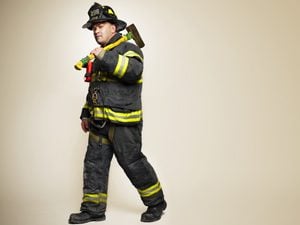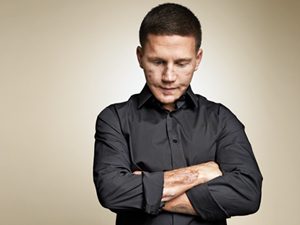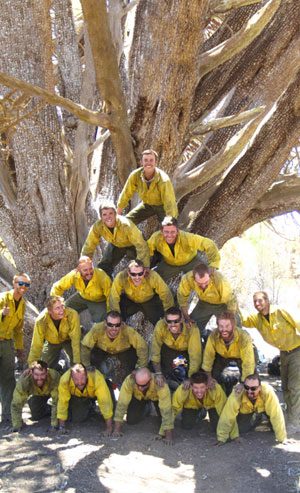The Fascinating Psychology of Bravery: What Makes Someone Brave?
Updated: Aug. 20, 2019
Does courage live in the heart or the mind? What compels some people to turn toward danger and others to run away? Science writer Jeff Wise investigates.
[dropcap]On[/dropcap] a cool November afternoon in Fleming Island, Florida, Melissa Hawkinson, then 41, was driving her five-year-old twins home from school when she saw a sudden splash in Doctors Lake just ahead. What was that? she thought. As she drove up to the scene, she saw a half-submerged car sinking about 30 yards offshore. “It was going down pretty quickly,” Hawkinson recalls. She stopped the car near the boat ramp and ran toward the water. This is going to be cold, she thought.
She took off her vest and leather boots, waded into the icy water, and swam out to the car, where she found Cameron Dorsey, five, strapped into his car seat as the swirling waters rose around him.
Hawkinson tried to yank open the door, but it was locked. So she pushed and tugged on the partially open window until she could reach through and unlock the door. She pulled the boy free, swam to shore, and handed him off to bystanders on a dock. The driver, the boy’s suicidal father, swam back to land on his own. Afterward, Hawkinson sat on the shore wrapped in a blanket. “For ten or 15 minutes, I couldn’t stop shaking,” she says.
There’s nothing visibly extraordinary about Melissa Hawkinson, an energetic stay-at-home mom with brown hair and a dimpled smile. Yet something set her apart from the dockside onlookers that day. Why do some people act quickly, willing to take a risk for a stranger? What makes them run toward danger rather than away from it? Hawkinson, the Granite Mountain Hotshots—19 of whom perished this past summer in Arizona—every hero who puts his or her life on the line to save another: What makes them brave?
Moreover, can bravery be learned, or is it a quality with which you are born? The answer is nuanced and complex. Bravery taps the mind, brain, and heart. It issues from instinct, training, and empathy. Today, neurologists, psychologists, and other researchers are studying bravery, trying to unravel the mystery.

THE BRAIN ON FEAR
Basic biology tells us that bravery emerges from a primal struggle between the brain’s decision-making hub, the prefrontal cortex, and the focal point of fear, the amygdala. When we find ourselves in an unexpected and dangerous situation, the amygdala sends a signal to the prefrontal cortex that interferes with our ability to reason clearly. In extreme cases, that “can be paralyzing,” says Daniela Schiller, a neuroscientist at the Mount Sinai School of Medicine in New York.
But the brave don’t succumb to fear. In some cases, they’re strengthened by the muscle memory that comes from intense training. Flight attendants, for example, practice until they’re able to empty a jumbo jet filled with passengers in 90 seconds.
So on July 6, when Asiana Airlines Flight 214 crashed short of the runway at San Francisco International Airport, Lee Yoon-Hye, 40, of Seoul, South Korea, knew what to do. After the plane struck the ground, its tail hit a seawall, ejecting three flight attendants. Lee and her remaining colleagues helped hundreds of passengers get out of the wreck and onto the runway. Nearly everyone survived, in part thanks to the crew’s unflappable demeanor.
When an emergency slide deployed in the plane, trapping panicked people, Lee handed a knife to a copilot, who punctured the slide and freed them. When Lee saw flames erupt, she tossed a fire extinguisher to a colleague, who tried to put the fire out. “We followed our training,” she told reporters. “I wasn’t really thinking … my body just started carrying out the steps needed.” After the ordeal, doctors discovered Lee had performed her job with a broken tailbone.
Lee’s ability to carry out her duties in the face of imminent danger lies in the area of the brain known as the basal ganglia. When you practice an act again and again, the responsibility for performing the action switches from the brain’s outer cortex, where it is experienced consciously, to the basal ganglia, which executes the action automatically and isn’t affected by fear.
Armies of every nation have understood this principle for thousands of years. Boot camps the world over deeply embed the fundamentals of combat into a recruit’s brain through relentless repetition. That way, when intense fear shuts down a soldier’s rational brain, he or she will still be able to function on autopilot.

Pictured: Lance Cpl. Kyle Carpenter
THE FRIENDSHIP FACTOR
Lance Cpl. Kyle Carpenter, a member of a Marine unit defending an Afghan village from a Taliban attack on November 21, 2010, illustrated another, equally powerful but more inherent quality that can drive courage: instinct. When a grenade landed near him, Carpenter reportedly shielded a nearby comrade from the blast.
Military psychologists say that the instinct to protect those we love is one of the most powerful forces motivating bravery in combat: soldiers who don’t do it for the medals but simply to defend their buddies. “In that moment, their love of their comrades overcomes any concern for their own well-being,” says West Point psychologist Michael Matthews.
Bravery on the battlefield or elsewhere may come from the release of oxytocin, the hormone that helps cement social ties, including the bond between nursing mothers and their babies. Several experiments have found that oxytocin also seems to reduce feelings of fear. Researcher Peter Kirsch placed test subjects in a brain-scanning machine and showed them fear-arousing images like faces with angry expressions and guns. When he also gave subjects whiffs of oxytocin, their amygdalas showed significantly less activation. So substantial is the hormone’s effect that experts are investigating how to turn oxytocin into a medication, a bravery pill, if you will.

OUT-OF-BODY EXPERIENCE
When a massive tornado ripped through Moore, Oklahoma, in May, teacher Rhonda Crosswhite used her body to shield six students in a school bathroom stall as 200 mph winds turned the building into splinters. Crosswhite discovered that she was injured only after her adrenaline wore off. “I had cuts everywhere that I didn’t even realize I had,” she told a reporter.
Surprisingly, a state of intense fear can actually facilitate extraordinary acts of bravery because circuitry within the brain triggers the release of the hormone and neurotransmitter noradrenaline, which mimics the effects of amphetamines. Under its influence, a person’s attention focuses, and time seems to slow down. Compounds similar to the active ingredient in codeine dull pain, preventing some people in extreme danger from realizing they’ve broken bones. And cortisol released into the bloodstream spurs the body to mobilize its energy stores so that it can move with otherwise unfeasible speed and strength in the face of danger.

Pictured: The Granite Mountain Hotshots
KNOWLEDGE IS POWER
Understanding your surroundings and the task at hand may also figure into the ability to act bravely. The Granite Mountain Hotshots certainly had a grasp of their job on June 30, 2013. At 9 a.m., 20 members of the team clambered out of their F750 pickup trucks and set off on foot toward a 300-acre fire that had been sparked by lightning atop Yarnell Hill, some 90 miles north of Phoenix, two days before. The men were all highly trained members of the local fire department in Prescott, Arizona. But none of them could have anticipated what would happen that day.
Just six hours later, a freak thunderstorm rolled in and triggered a sudden change in wind direction, causing the fire to encircle the crew with a 3,000-degree, 40-foot-high wall of flames. Within minutes, 19 firefighters were dead.
For those of us who don’t fight fires, the courage it would take to willingly put oneself in such danger seems all but unimaginable. Psychologists have found that fear subsides when people believe that they understand a threat. The reason may be that we’re naturally afraid of the unknown: Put a person inside a brain-scanning machine and show him an unfamiliar face, and his amygdala will activate; show him a face he knows, and it won’t.
A Harvard sociologist and former wildland firefighter, Matthew Desmond writes in his book On the Fireline: Living and Dying with Wildland Firefighters that most are experienced outdoorspeople. “Courage is based on the idea that you recognize the danger in the thing you see,” Desmond says. For experienced firefighters, a sense of mastery erodes the perception of danger and with it the feeling of fear. “When you start, you’re in awe,” he says. “But once you’ve seen a hundred fires, the adrenaline goes away.”
For many of us, a feeling of intense danger is itself an unfamiliar place. The strange mental state in which we feel as though we’re watching a movie of ourselves can provoke further anxiety and leave us feeling paralyzed. The numerous witnesses to Melissa Hawkinson’s feat may have been flummoxed because they’d never been in such a situation before. For her part, Hawkinson had prior experience. Years earlier, she and her husband had come across a car accident and performed CPR on the unconscious driver until paramedics arrived. Before that encounter, she says, she didn’t know how she’d handle herself in an emergency. Since then, she’s had confidence in her ability to perform under pressure. “I can remain calm and do what I need to do,” Hawkinson says.
In other words, she’s found her own answer to the mystery of bravery.
